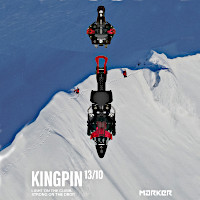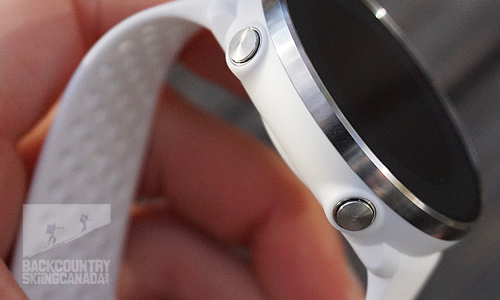


SITE LOGIN
- REVIEWS
- NEWS
- STORE
- ROUTES
- LODGING
-
VIDEOS
- 2022/23 Gear Reviews
- 2021/22 Gear Reviews
- 2020/21 Gear Reviews
- 2019/20 Gear Reviews
- 2018/19 Gear Reviews
- 2017/18 Gear Reviews
- 2016/17 Gear Reviews
- 2015/16 Gear Reviews
- 2014/15 Gear Reviews
- 2013/14 Gear Reviews
- 2012/13 Gear Reviews
- 2011/12 Gear Reviews
- 2020 Outdoor Retailer
- 2019 Outdoor Retailer
- 2018 Outdoor Retailer
- 2017 Outdoor Presscamp
- 2017 Outdoor Retailer
- 2016 Outdoor Presscamp
- 2016 Outdoor Retailer
- 2015 SIA Show
- 2014 Outdoor Retailer
- 2013 SIA Show
- 2012 Outdoor Retailer
- Tips and Tricks
- Backcountry Skiing
- SAFETY
- ABOUT
- REVIEWS
- NEWS
- STORE
- ROUTES
- LODGING
-
VIDEOS
- 2022/23 Gear Reviews
- 2021/22 Gear Reviews
- 2020/21 Gear Reviews
- 2019/20 Gear Reviews
- 2018/19 Gear Reviews
- 2017/18 Gear Reviews
- 2016/17 Gear Reviews
- 2015/16 Gear Reviews
- 2014/15 Gear Reviews
- 2013/14 Gear Reviews
- 2012/13 Gear Reviews
- 2011/12 Gear Reviews
- 2020 Outdoor Retailer
- 2019 Outdoor Retailer
- 2018 Outdoor Retailer
- 2017 Outdoor Presscamp
- 2017 Outdoor Retailer
- 2016 Outdoor Presscamp
- 2016 Outdoor Retailer
- 2015 SIA Show
- 2014 Outdoor Retailer
- 2013 SIA Show
- 2012 Outdoor Retailer
- Tips and Tricks
- Backcountry Skiing
- SAFETY
- ABOUT
TOP VIDEOS
Polar Vantage M Watch
A GPS watch is a great backcountry ski tool. Having access to location data facilitates an efficient and productive tour, especially if exploring a new area. Knowing your elevation and vertical gain allow you to more accurately plan and track progress, and recording physical metrics helps you better gauge your fitness level over time. A common way to do so is by monitoring your heart rate; consequently most GPS sport watches also have a heart rate monitor. As wearable tech becomes increasingly popular to the general public, more manufacturers are including features such as calorie counters, pedometers, sleep trackers and activity analysis. With so many options available, the user experience is really the ultimate decision factor. Most GPS watches will do most things, but the user interface is unique to the brand. The Polar Vantage M offers easy-to-learn programming and a simple design, catering to runners and triathletes in its feature set.
Polar Vantage M Watch's home screen with activity sub-display.
- SHOW THE REST OF THE REVIEW / PHOTOS / VIDEOS
-
The Polar Vantage M has an optical HR monitor that can be enabled for continuous tracking or set to track only during activity. The user can choose how to display HR data for each individual sport mode, as well as set HR zones specifically for each. The watch is not compatible with ANT+ power pods or HR belts, but can be synced with most Bluetooth Smart HR belts (with the exception of those running FirstBeat software).
Polar Flow (the accompanying mobile and desktop package) currently has sport modes for everything from yoga to ultrarunning to disc golf, and the watch can hold up to 20 at a time, each with individualized metrics (when selecting a sport mode, the heart and GPS icons will appear to indict a fix; other sensors, such as power pods will also appear if available).Although the default metrics are the same for each sport mode, the coding is different, so certain metrics are recorded at rates appropriate for that specific sport mode (yoga burns less calories than crossfit for the same duration of time, so the watch software adjusts for this internally). If ‘treadmill running’, or another indoor sport mode is selected, the GPS is automatically disabled. Polar Flow is also cross compatible with other fitness apps, such as Strava and TrainingPeaks, so the user can import their training data to a linked profile.
See below for weekly training and activity tracking on the mobile site, followed by activity tracking overview on the desktop site.The watch includes a pedometer, and if continuous HR tracking is enabled the user has access to 24hr activity and sleep tracking. Individual metrics such as height, weight and activity level are inputs for different ‘activity goals’ and the user can view all of this data over in either the mobile app or the desktop site. Some data is available in the watch memory itself, such as a training log with workout summaries displaying duration, distance, laps, HR mins and maxs, HR zones, elevation mins and maxs, vertical gain/loss, calories, and speed. Some of these metrics are automatically included; others are manually integrated into the sport mode.
Below you'll see the training sessions menu; scroll through and select for more detail and below that individual training session; again, scroll through to view metrics.Since there are endless features to most GPS watches, it's much more efficient to point out the things that the Polar Vantage M doesn't have compared to its competitors: the Garmin Forerunner 735XT and the Suunto Spartan Trainer Wrist HR. The Vantage M does not include a barometric altimeter or HRV (heart rate variability; for recovery analysis) software (the Vantage V, Suunto and Garmin do). The GPS interval is not customizable (set to 1s intervals), although the battery life is right in line with Suunto (30 hours) and double Garmin (14 hours). The navigational capacity of the Vantage is noticeably less developed - lacking the ability to follow GPS tracks, input waypoints, track waypoints or input routes from a phone to the unit. A back-to-start function is being added by Polar, as well as phone notifications and the ability to input Strava segments. The price of the Vantage M (390 CAD / 280 USD) is comparable to the Suunto Spartan Trainer (480 CAD / 280 USD (metal bezel version) and the Garmin Forerunner 735XT (450 CAD / 350 USD).
The watch unit itself keeps things simple and is easy to navigate. The watch itself has a classic five button design with a plastic bezel and screen casing. The display is inverted (white on black) and reads well in direct sunlight.The straps are swappable with most other watch straps (including additional options sold by Polar).The top of two buttons is a LOCK/UNLOCK function, as well as a backlight. The bottom of the two buttons (also the BACK function) accesses a menu allowing the user to start a workout, use either the timer or the stopwatch, or access the SETTINGS.
Once inside a menu, the top and bottom of the three buttons allows the user to scroll through the menu items; the middle (red) button is the SELECT function. From the home screen, the top and bottom of the three buttons scroll through sleep, current heart rate, training sessions, activity, or cardio-load sub displays.If the centre red button is pushed, the user can scroll through more advanced screens specific to the selected metric (for example, if sleep time is displayed on the home screen the user can scroll through sleep statistics by pressing the centre button).
You can see the home screen with activity sub-display below as well as the activity detail menu; scroll through and heart rate (HR) detail menu.The watch also comes with a stopwatch, timer, and alarm with snooze as well.Features:
- Display: 3cm/1.2” color display, 240 x 240 resolution
- Battery: 230mAh li-pol battery; USB rechargeable
- GPS: Integrated GPS/GLONASS; 30 hours usable
- Water Resistance: 30m / 100’
- Sensors: Compatible with Bluetooth Smart Sensors
Verdict:
The Polar Vantage M is a simple, functional GPS watch that can meet the needs of a variety of activities. Built specifically for running, most of the features and software cater to users tracking their fitness or training for an event. A clean and usable mobile interface doesn’t overwhelm and allows for the right amount of customization. Although lacking certain navigational tools, the Vantage M does the simple things well with an accurate GPS and HR. The only accuracy issues occured when using the watch outside or with gloves, as the band has to be quite tight and directly over the wrist to get an accurate HR reading. Readings are generally 10-30 bpm lower if the band is not tight enough. The instant HR zone display on the unit is great for those who train according to HR zones. The GPS fixes incredibly fast and a 1s interval with 30h battery life is currently leading the industry (Polar, Garmin and Suunto all use Sony chips, so battery life is easy to compare). Battery life is sacrificed if continuously monitoring HR, although a full charge generally lasts about 4-6 days depending on activity level (longer if not using GPS during sport modes, e.g. gym training). The downside to the activity and sleep tracking functions is they don’t accurately distinguish when the user is not wearing the watch vs. when the user is actually sleeping or inactive (this is only an issue if you plan to use the activity and sleep tracking in a religious sense).
The only potential downside to using this watch as an everyday wearable would be the plastic bezel and foam-like strap material. The durability may not be there for those with manual labour jobs or people who are generally hard on their gear, although the straps are replaceable. The watch strap only has one plastic keeper and the buckle sticks out quite far. A slimmer buckle and another strap keeper would make a big difference when wearing every day. Another quirk was the optical HR tracking can be quite bright at night if you sleep with your hands close to your head, but again this is easily disabled if you aren't interested in continuous tracking.
To summarize, the Vantage M walks the line between the wearable tech market (e.g. Apple Watch) and the navigation/sport specific brands (e.g. Garmin), bringing a bit of both feature sets to the table. For the running enthusiast wanting to track weekly mileage, or the backcountry skier that does want to deal with a touchscreen, the Vantage M offers a lightweight wearable watch at an affordable price point. For those who aren’t looking for maps or 120 hours of GPS recording power, the Vantage M will perform all the basics in a convenient package.
For a look at a more recent Polar watch check out our review of their Polar Ignite GPS Sports Watch here.
 |
PROS:
|
 |
CONS:
|
SPECS:
Price: $390CAN / $280US
Dimensions: 46 x 46 x 12.5mm / 1.8 x 1.8 x 0.5”
Weight: 45g / 1.6oz
Sizes: Small 130-175mm (1.5-6.9”) Medium/Large 140-210mm (5.5-8.3”)
Colours: White, Black and Red bezels; variety of strap colours in cloth or plastic
RATING: 8.5/10
| Functionality: 1.5/2 Features: 1.5/2 Quality: 1.5/2 Size/Weight: 2/2 Price: 2/2 |
Did we miss something? Are we totally out to lunch? Let us know what you think. People like/dislike gear for different reasons so chime in below and we'll get a well-rounded evaluation. You'll need to login or register before you can comment but it only takes a few seconds, then you're good to go.
Leave a Comment:
Copyright © 2009-25 Backcountry Skiing Canada. All Rights Reserved.
























